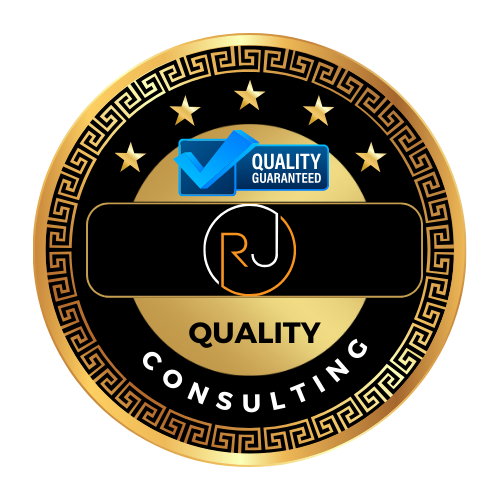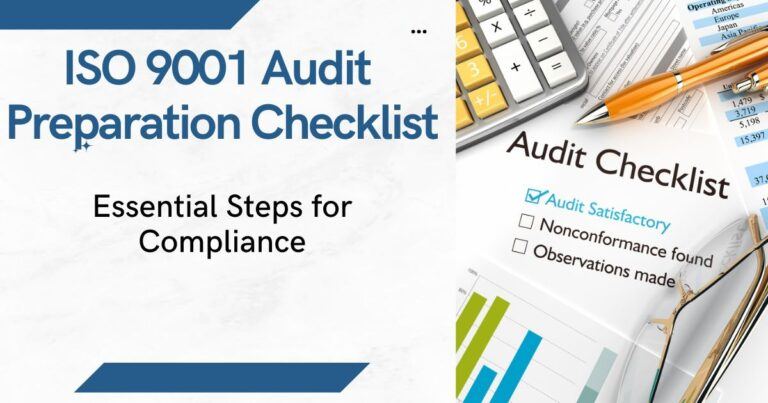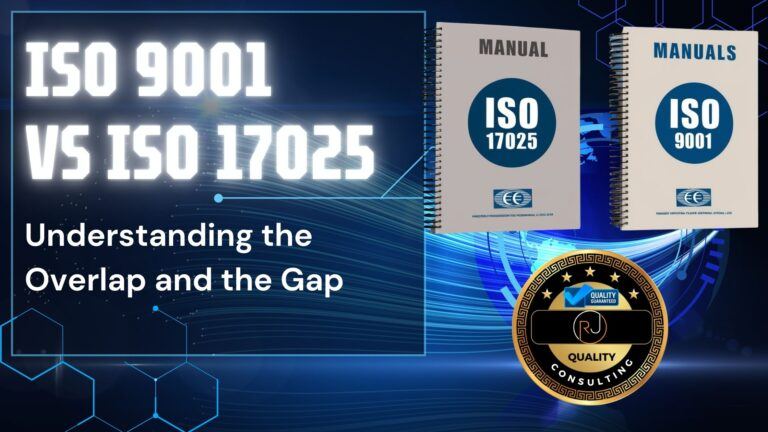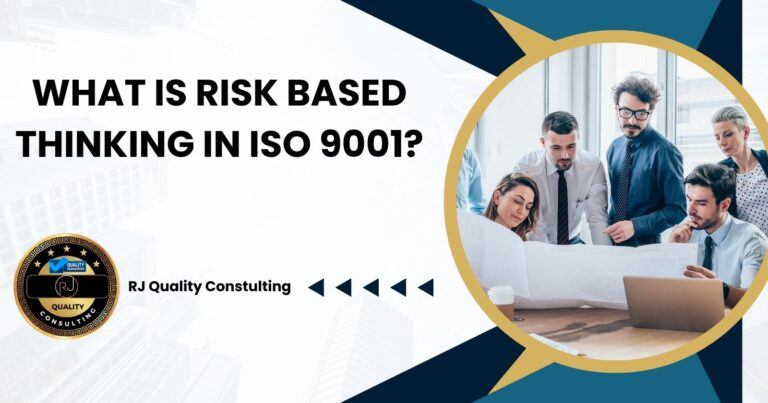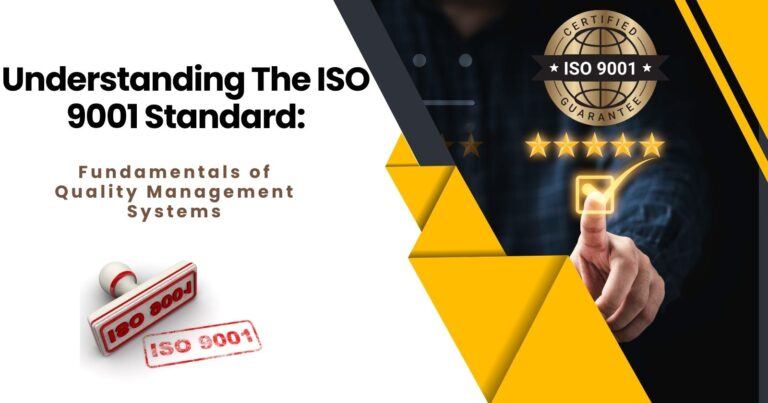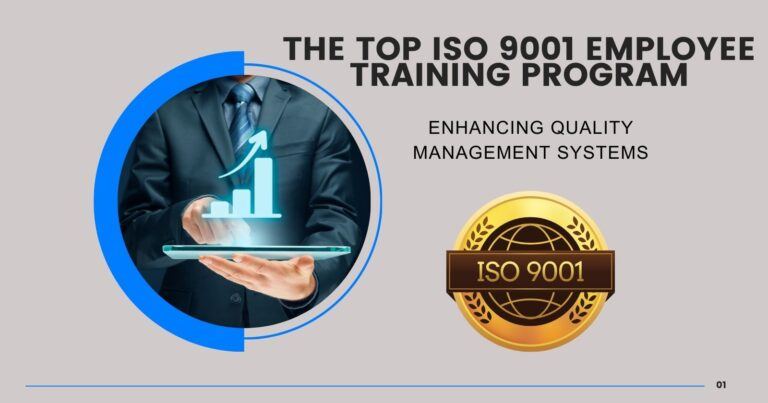Understanding Internal and External Issues in ISO 9001
ISO 9001 is a widely recognized standard for quality management systems, providing a framework for companies to ensure that they consistently offer products and services that meet customer and regulatory requirements. Embracing ISO 9001 helps organizations foster a culture of continuous improvement, enhancing efficiency and customer satisfaction. Understanding internal and external issues in ISO 9001 is a good first step in fostering a good quality management system.
Central to this standard is the identification and management of various factors that can affect the stability and performance of a quality management system. These factors, known within the framework as ‘internal and external issues,’ play a critical role in shaping an organization’s approach to quality management.
By laying out processes to address these issues, businesses can navigate the complexities of their operational environment. Understanding the specific nature of internal and external issues and the risks associated with them is fundamental to achieving and maintaining ISO 9001 compliance and, more importantly, sustaining quality excellence.
📘 ISO/IEC 17025 Quality Manual Template
Accelerate your lab’s accreditation process with our comprehensive Quality Manual Template, designed to align with ISO/IEC 17025:2017 standards.
- Fully editable and customizable to fit your laboratory’s needs.
- Includes all necessary procedures, forms, and policies.
- Structured to facilitate easy implementation and compliance.
- Developed by experts with extensive ISO/IEC 17025 experience.
Check Out Our Great Selection of ISO 9001 Online Training Courses
Looking to master ISO 9001:2015 or ensure top-notch training for your team? Explore our Online Courses here!
In this narrative, I’ll explore not only what constitutes internal and external issues but also how they can be systematically approached to reinforce a robust and resilient quality management system. As we delve into the specifics, this discussion will seamlessly lead into the nuances that define internal and external issues and risks under the ISO 9001 framework in the following section.
What are Internal and External Issues in ISO?

The concept of internal and external issues is foundational to the ISO 9001 standard’s approach to quality management. Internal issues refer to elements within an organization that can influence its quality management system (QMS). These can range from the company’s internal processes and resources to its culture and employee competencies, which also includes employee knowledge retention.
On the other end of the spectrum, external issues encompass factors beyond a company’s immediate control that can have a significant impact on the QMS. Examples include technological advances, economic trends, regulatory changes, and competitors’ behaviors. It can also include customers as well as suppliers. Maintaining awareness of these external factors is crucial for any organization wishing to stay competitive and compliant.
The dynamics between an organization’s internal operations and the external business environment command attention in the ISO 9001 standard. It emphasizes the need for a QMS that is not only robust and efficient internally but also adaptable and responsive to the fluidity of the external market landscape.
To maintain a QMS that is both resilient and compliant, an organization must routinely examine its internal makeup – scrutinizing processes, employee engagement, and internal governance structures. Equally, it must extend its vigilance to the external environment, staying ahead of market changes, customer expectations, and regulatory requirements.
It is also necessary to document these internal and external issues. Most companies document these in a table within the quality manual, although a quality manual is not a required document according to ISO 9001:2015, it is a document that I encourage companies to have. It is a good place to house policies and other documents that are required.
Effectively managing these internal and external issues is tantamount to the strength and agility of an organization’s QMS. It’s the perceptiveness to these elements that primes a company for sustained excellence and keeps it attuned to the pulse of quality management.
The Intersection of Risk Management and Internal and External Issues in ISO 9001

Identifying and managing risk is crucial in any ISO 9001 certified quality management system. Every organization faces a myriad of risks and opportunities that stem from both internal and external factors. Here, I will elaborate on what these risks can mean in the context of ISO 9001 and why understanding them is critical for maintaining and improving quality management processes.
ISO 9001 requires that an organization acknowledges its internal risks, which may include inefficiencies in operations, a lack of employee engagement, or potential disruptions in supply chain management. It also calls for an understanding of external risks, such as shifts in customer demands, technological advancements, and changes in laws and regulations that affect the industry.
The process of risk-based thinking in ISO 9001 involves a thorough analysis of the business environment. Organizations must look inward to dissect their processes and identify points of potential failure. They must also keep a finger on the pulse of the market and broader industry to foresee challenges that lie ahead.
Once risks are identified, evaluating their potential impact on quality is essential. This evaluation helps in prioritizing risks based on their likelihood and severity. With a ranked list of risks, a company can allocate resources effectively to address the most pressing concerns first.
The next step is devising strategies for risk mitigation. This could involve adapting existing processes, developing new procedures, or, in some cases, accepting certain risks in the context of a broader strategy. Ensuring that risk management efforts are integrated into every level of an organization is pivotal for the resilience and continual improvement of the quality management system.
When it comes to the opportunity’s aspect, it’s all about capitalizing on positive risks. ISO 9001 encourages organizations to not only shield themselves against potential harm but also to seek and seize opportunities that can lead to improved efficiency, customer satisfaction, and competitive advantage.
In preparing to discuss the specific internal and external issues a company might face, it’s clear that risk management is a cornerstone of ISO 9001’s approach to quality. A robust risk management process not only prepares an organization to handle challenges but also positions it to thrive by recognizing and embracing opportunities.
What are the Internal and External Issues of a Company

Every company faces a unique set of challenges dictated by its internal dynamics and the external environment it operates in. Internal issues often involve organizational structure, employee competencies, and company culture. These elements can influence decision-making processes, efficiency, and overall performance. On the flip side, external issues might encompass evolving market demands, competition, legal regulations, and economic fluctuations. These factors require a company to be agile and responsive to maintain its commitment to quality.
I’ve witnessed companies exhibit resilience by turning inwards to strengthen their core operations. These successful businesses regularly review their internal procedures to ensure they’re in line with their strategic objectives. They also place a strong emphasis on staff training and foster a culture of continuous improvement. This internal focus equips them to better withstand external pressures.
Externally, I’ve seen companies adopt flexible business models to absorb the shocks of economic downturns and embrace technological innovations to stay ahead. By keeping a keen eye on market trends and regulatory changes, these companies can pivot and adapt, cushioning the impact of these external factors on their operations.
In my experience, companies that flourish are those that implement best practices like environmental scanning and SWOT analysis. By doing so, they can preemptively identify potential internal weaknesses and external threats, while also capitalizing on internal strengths and external opportunities.
A key takeaway is that both internal and external issues require vigilant monitoring and proactive responses. Companies need to integrate these issues into their strategic planning through comprehensive risk management processes. In doing so, they create a solid foundation for a resilient quality management system.
Integrating Risk and Opportunities into ISO 9001
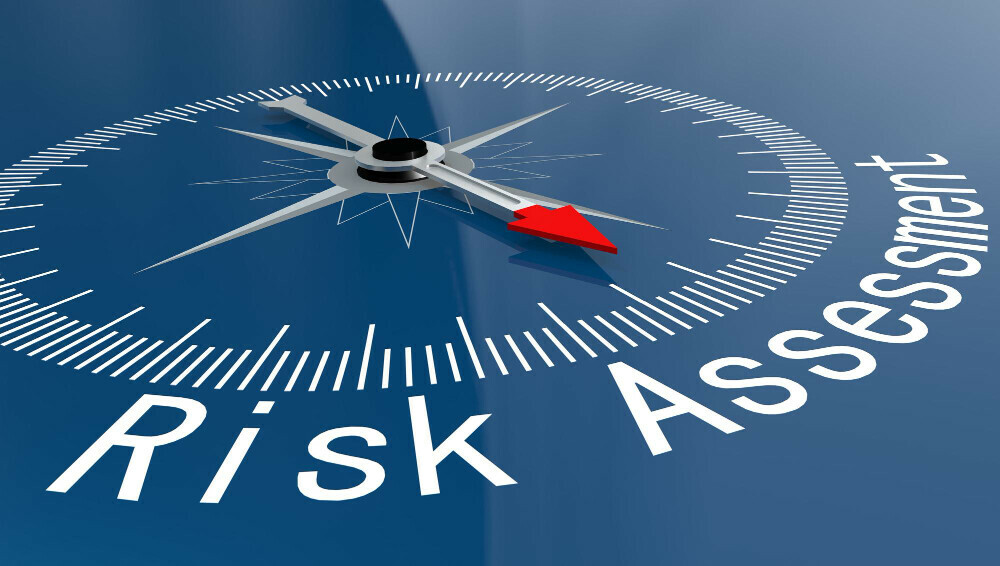
Section 6 of ISO 9001 doesn’t stand in isolation. It intricately connects with the concepts of internal and external issues outlined in Sections 4.1 and 4.2. This integration is the backbone of risk and opportunity management within the framework of ISO 9001. By understanding the relationship between these sections, companies can better align their risk management strategies with their broader organizational goals – a critical factor in driving both growth and quality standards.
The utilization of tools and methodologies, such as SWOT analysis or risk matrices, empowers organizations to navigate these complexities with greater precision. These allow for the systematic identification of potential challenges and opportunities, rendering the quality management system more robust and responsive to the ever-evolving business landscape.
Leadership plays a pivotal role in this integrated approach. Their commitment to proactive risk and opportunity management sets the tone for the entire organization. When leaders demonstrate a clear vision and unambiguous expectations, it galvanizes the organization’s culture, encouraging a collective effort towards maintaining superior quality standards and a competitive edge.
To encapsulate, Section 6 of the ISO 9001 serves as a critical link that weaves together the tapestry of internal and external factors influencing an organization. Understanding and executing this integrated approach not only fulfills the requirements of the standard but also establishes a resilient and opportunity-oriented business ethos.
🕒 Book Your Free 45-Minute Consultation
Have questions about ISO/IEC 17025 or ISO 9001 implementation or accreditation? Schedule a free 45-minute consultation with me to discuss your Company or laboratory’s needs and how we can achieve compliance together.
Schedule Your Consultation